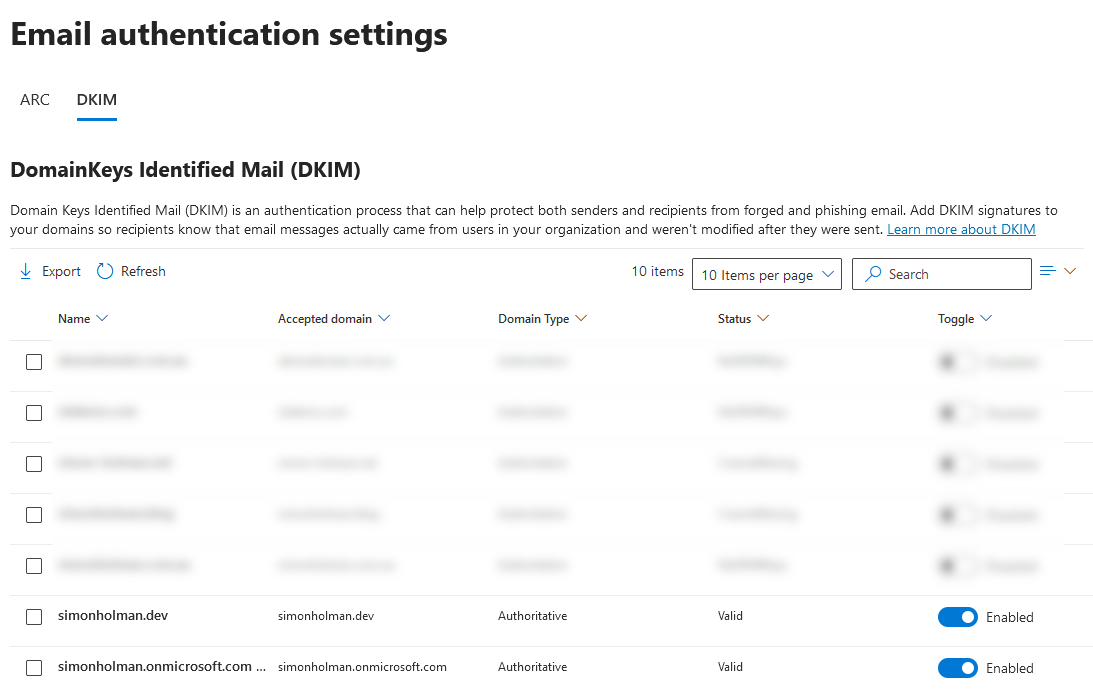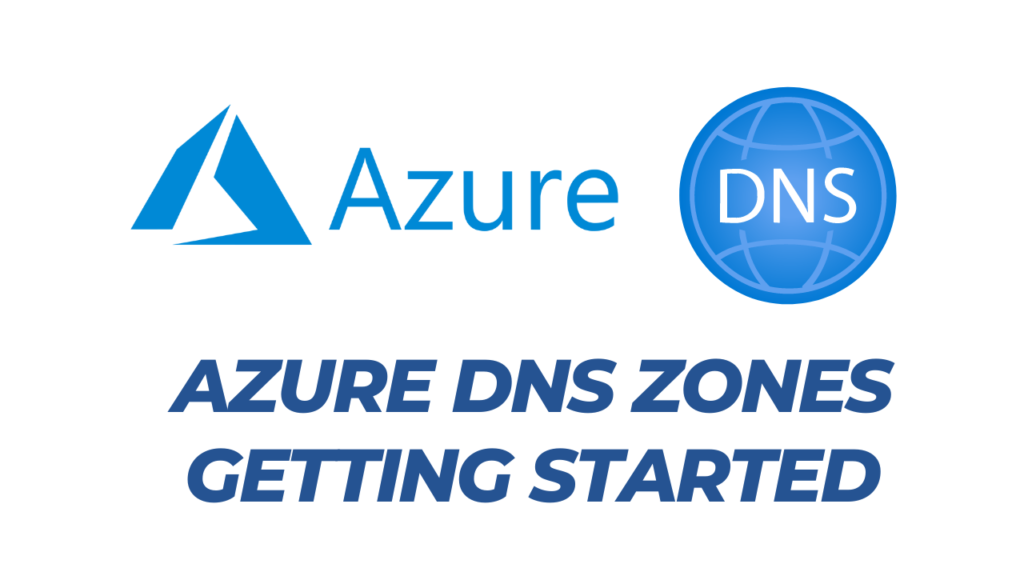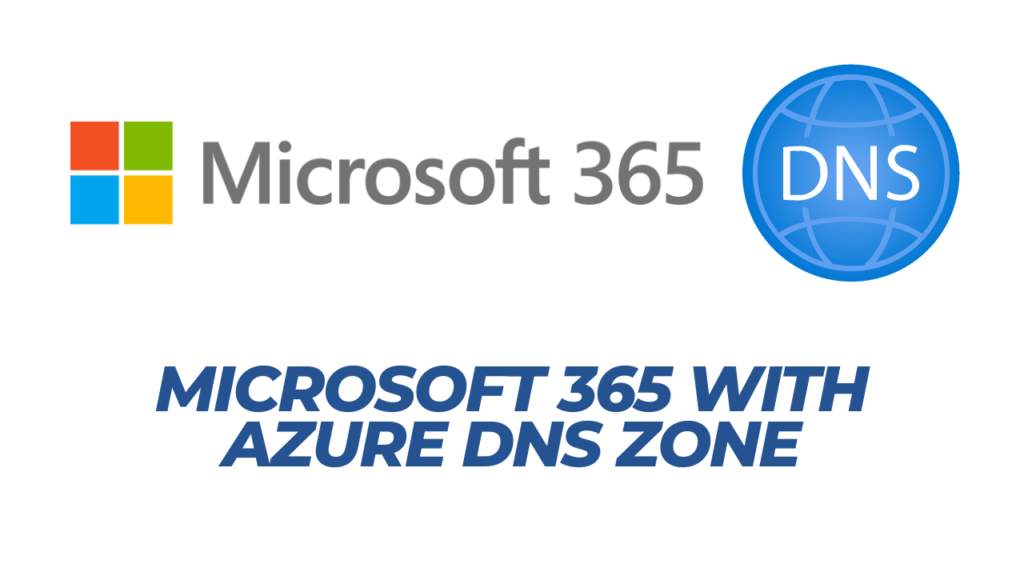DKIM (DomainKeys Identified Mail) is like a digital signature for emails that proves an email really came from who it claims to be from.
DKIM helps prevent email spoofing and is one of the main tools (along with SPF and DMARC) used to fight email fraud.
Here’s how Office 365 DKIM works:
When your organization sends an email:
- Your email server adds a special digital signature to the email
- This signature is created using a private key that only your organization has
When someone receives your email:
- Their email server looks up your organization’s public key (which is published in your DNS records)
- It uses this key to verify the signature
- If the signature is valid, it proves the email really came from your domain and wasn’t tampered with
Configure DKIM for your domain in Office 365
Head over to the Email authentication settings page in Office365.
This page will list all the domains you’ve added to your tenancy and their DKIM status.
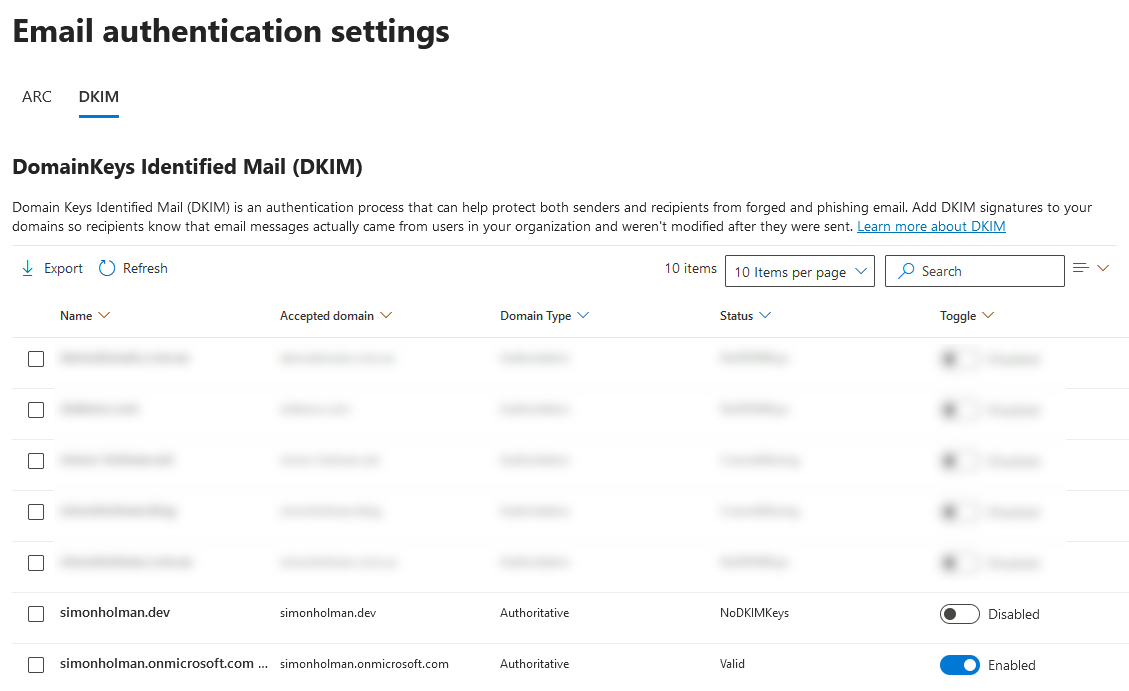
By clicking on your domain, in this instance simonholman.dev, we can see that no DKIM keys have been saved for this domain, and we have the ability to Create DKIM keys
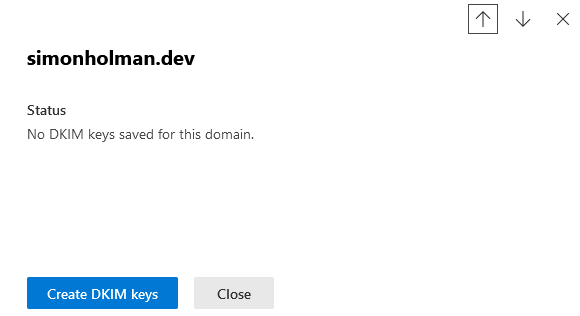
Clicking on “Create DKIM keys” and a set of keys will be generated and shown on the screen. No we head over to our DNS portal. For this domain, that’s Azure DNS.
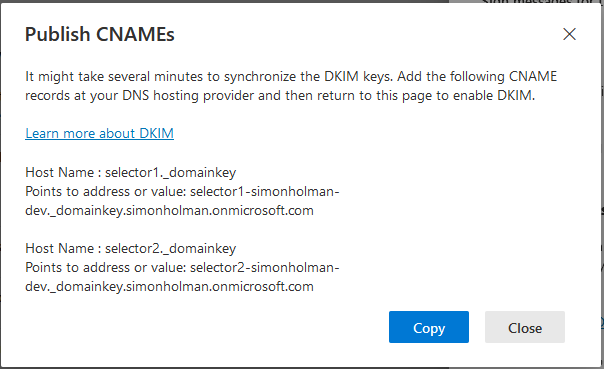
In the Azure Portal, head to your DNS zones and view your Recordsets. If you use another DNS provider, then head over to where your DNS records are managed.
We need to add a new Recordset and add the host name and value as per the instructions above. The record type is CNAME, so change that in the record type.
The first record for my domain has a hostname of “selector1._domainkey” and a value of “selector1-simonholman-dev._domainkey.simonholman.onmicrosoft.com“

Click Add to save the recordset and add the second CNAME record as above.
When we close the DKIM record popup in Office365, we now have the ability to Enable DKIM signing with our new DNS records.
You may need to wait a little while for these DNS records to propagate prior to this enabling correctly.
When you click the toggle box to switch from Disabled to Enabled, the DNS records will be validated and you’ll see a warning like below if they have not propagated yet.
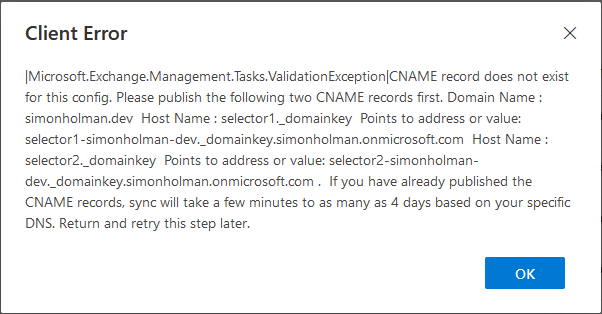
If you see this, click Ok, then wait a few hours and try again.
Once the DNS records have propagated, and you try to enable the DKIM keys again, you’ll see the following.

If you refresh your Email authentication settings list, you’ll see that it now shows as enabled.
